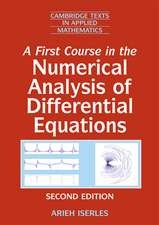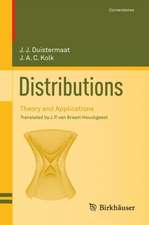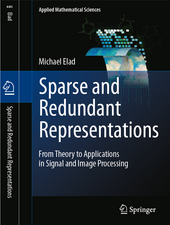Methods of Bifurcation Theory: Grundlehren der mathematischen Wissenschaften, cartea 251
Autor S.-N. Chow, J. K. Haleen Limba Engleză Paperback – 8 noi 2011
Din seria Grundlehren der mathematischen Wissenschaften
-
 Preț: 353.84 lei
Preț: 353.84 lei - 24%
 Preț: 728.15 lei
Preț: 728.15 lei -
 Preț: 410.21 lei
Preț: 410.21 lei - 24%
 Preț: 587.87 lei
Preț: 587.87 lei - 17%
 Preț: 498.73 lei
Preț: 498.73 lei -
 Preț: 592.75 lei
Preț: 592.75 lei - 20%
 Preț: 692.49 lei
Preț: 692.49 lei - 24%
 Preț: 893.28 lei
Preț: 893.28 lei - 20%
 Preț: 824.73 lei
Preț: 824.73 lei - 24%
 Preț: 632.96 lei
Preț: 632.96 lei - 15%
 Preț: 596.69 lei
Preț: 596.69 lei - 15%
 Preț: 714.49 lei
Preț: 714.49 lei -
 Preț: 333.01 lei
Preț: 333.01 lei - 15%
 Preț: 473.16 lei
Preț: 473.16 lei -
 Preț: 356.49 lei
Preț: 356.49 lei -
 Preț: 484.43 lei
Preț: 484.43 lei - 15%
 Preț: 452.79 lei
Preț: 452.79 lei -
 Preț: 456.66 lei
Preț: 456.66 lei - 15%
 Preț: 708.75 lei
Preț: 708.75 lei -
 Preț: 423.08 lei
Preț: 423.08 lei - 15%
 Preț: 444.29 lei
Preț: 444.29 lei - 15%
 Preț: 527.79 lei
Preț: 527.79 lei - 15%
 Preț: 589.65 lei
Preț: 589.65 lei -
 Preț: 353.40 lei
Preț: 353.40 lei - 18%
 Preț: 727.66 lei
Preț: 727.66 lei -
 Preț: 387.96 lei
Preț: 387.96 lei - 15%
 Preț: 454.74 lei
Preț: 454.74 lei - 15%
 Preț: 481.03 lei
Preț: 481.03 lei -
 Preț: 464.55 lei
Preț: 464.55 lei -
 Preț: 348.77 lei
Preț: 348.77 lei -
 Preț: 362.04 lei
Preț: 362.04 lei -
 Preț: 488.12 lei
Preț: 488.12 lei - 15%
 Preț: 447.57 lei
Preț: 447.57 lei -
 Preț: 419.81 lei
Preț: 419.81 lei -
 Preț: 388.52 lei
Preț: 388.52 lei -
 Preț: 419.21 lei
Preț: 419.21 lei - 15%
 Preț: 581.01 lei
Preț: 581.01 lei -
 Preț: 497.75 lei
Preț: 497.75 lei -
 Preț: 360.53 lei
Preț: 360.53 lei -
 Preț: 387.75 lei
Preț: 387.75 lei -
 Preț: 419.81 lei
Preț: 419.81 lei - 18%
 Preț: 725.75 lei
Preț: 725.75 lei -
 Preț: 453.78 lei
Preț: 453.78 lei -
 Preț: 386.39 lei
Preț: 386.39 lei
Preț: 708.75 lei
Preț vechi: 833.83 lei
-15% Nou
Puncte Express: 1063
Preț estimativ în valută:
135.64€ • 140.12$ • 112.88£
135.64€ • 140.12$ • 112.88£
Carte tipărită la comandă
Livrare economică 25 martie-08 aprilie
Preluare comenzi: 021 569.72.76
Specificații
ISBN-13: 9781461381617
ISBN-10: 1461381614
Pagini: 540
Ilustrații: XV, 525 p.
Dimensiuni: 155 x 235 x 28 mm
Greutate: 0.75 kg
Ediția:Softcover reprint of the original 1st ed. 1982
Editura: Springer
Colecția Springer
Seria Grundlehren der mathematischen Wissenschaften
Locul publicării:New York, NY, United States
ISBN-10: 1461381614
Pagini: 540
Ilustrații: XV, 525 p.
Dimensiuni: 155 x 235 x 28 mm
Greutate: 0.75 kg
Ediția:Softcover reprint of the original 1st ed. 1982
Editura: Springer
Colecția Springer
Seria Grundlehren der mathematischen Wissenschaften
Locul publicării:New York, NY, United States
Public țintă
ResearchCuprins
1 Introduction and Examples.- 1.1. Definition of Bifurcation Surface.- 1.2. Examples with One Parameter.- 1.3. The Euler-Bernoulli Rod.- 1.4. The Hopf Bifurcation.- 1.5. Some Generic Examples.- 1.6. Dynamic Bifurcation.- 2 Elements of Nonlinear Analysis.- 2.1. Calculus.- 2.2. Local Implicit Function Theorem.- 2.3. Global Implicit Function Theorem.- 2.4. Alternative Methods.- 2.5. Embedding Theorems.- 2.6. Weierstrass Preparation Theorem.- 2.7. The Malgrange Preparation Theorem.- 2.8. Newton Polygon.- 2.9. Manifolds and Transversality.- 2.10. Sard’s Theorem.- 2.11. Topological Degree, Index of a Vector Field and Fixed Point Index.- 2.12. Ljusternik-Schnirelman Theory in ?n.- 2.13. Bibliographical Notes.- 3 Applications of the Implicit Function Theorem.- 3.1. Existence of Solutions of Ordinary Differential Equations.- 3.2. Admissible Classes in Ordinary Differential Equations.- 3.3. Global Boundary Value Problems for Ordinary Differential Equations.- 3.4. Hopf Bifurcation Theorem.- 3.5. Liapunov Center Theorem.- 3.6. Saddle Point Property.- 3.7. The Hartman-Grobman Theorem.- 3.8. An Elliptic Problem.- 3.9. A Hyperbolic Problem.- 3.10. Bibliographical Notes.- 4 Variational Method.- 4.1. Introduction.- 4.2. Weak Lower Semicontinuity.- 4.3. Monotone Operators.- 4.4. Condition (C).- 4.5. Minimax Principle in Banach Spaces.- 4.6. Mountain Pass Theorem.- 4.7. Periodic Solutions of a Semilinear Wave Equation.- 4.8. Ljusternik-Schnirelman Theory on Banach Manifolds.- 4.9. Stationary Waves.- 4.10. The Krasnoselski Theorems.- 4.11. Variational Property of Bifurcation Equation.- 4.12. Liapunov Center Theorem at Resonance.- 4.13. Bibliographical Notes.- 5 The Linear Approximation and Bifurcation.- 5.1. Introduction.- 5.2. Eigenvalues of B.- 5.3. Eigenvalues of (B, A).- 5.4.Eigenvalues of (B, A1, ... , AN).- 5.5. Bifurcation from a Simple Eigenvalue.- 5.6. Applications of Simple Eigenvalues.- 5.7. Bifurcation Based on the Linear Equation.- 5.8. Global Bifurcation.- 5.9. An Application.to a Delay Differential Equation.- 5.10. Bibliographical Notes.- 6 Bifurcation with One Dimensional Null Space.- 6.1. Introduction.- 6.2. Quadratic Nonlinearities.- 6.3. Applications.- 6.4. Cubic Nonlinearities.- 6.5. Applications.- 6.6. Bifurcation from Known Solutions.- 6.7. Effects of Symmetry.- 6.8. Universal Unfoldings.- 6.9. Bibliographical Notes.- 7 Bifurcation with Higher Dimensional Null Spaces.- 7.1. Introduction.- 7.2. The Quadratic Revisited.- 7.3. Quadratic Nonlinearities I.- 7.4. Quadratic Nonlinearities II.- 7.5. Cubic Nonlinearities I.- 7.6. Cubic Nonlinearities II.- 7.7. Cubic Nonlinearities III.- 7.8. Bibliographical Notes.- 8 Some Applications.- 8.1. Introduction.- 8.2. The von Kármán Equations.- 8.3. The Linearized Problem.- 8.4. Noncritical Length.- 8.5. Critical Length.- 8.6. An Example in Chemical Reactions.- 8.7. The Duffing Equation with Harmonic Forcing.- 8.8. Bibliographical Notes.- 9 Bifurcation near Equilibrium.- 9.1. Introduction.- 9.2. Center Manifolds.- 9.3. Autonomous Case.- 9.4. Periodic Case.- 9.5. Bifurcation from a Focus.- 9.6. Bibliographical Notes.- 10 Bifurcation of Autonomous Planar Equations.- 10.1. Introduction.- 10.2. Periodic Orbit.- 10.3. Homoclinic Orbit.- 10.4. Closed Curve with a Saddle-Node.- 10.5. Remarks on Structural Stability and Bifurcation.- 10.6. Remarks on Infinite Dimensional Systems and Turbulence.- 10.7. Bibliographical Notes.- 11 Bifurcation of Periodic Planar Equations.- 11.1. Introduction.- 11.2. Periodic Orbit-Subharmonics.- 11.3. Homoclinic Orbit.- 11.4. Subharmonics and Homoclinic Points.-11.5. Abstract Bifurcation near a Closed Curve.- 11.6. Bibliographical Notes.- 12 Normal Forms and Invariant Manifolds.- 12.1. Introduction.- 12.2. Transformation Theory and Normal Forms.- 12.3. More on Normal Forms.- 12.4. The Method of Averaging.- 12.5. Integral Manifolds and Invariant Tori.- 12.6. Bifurcation from a Periodic Orbit to a Torus.- 12.7. Bifurcation of Tori.- 12.8. Bibliographical Notes.- 13 Higher Order Bifurcation near Equilibrium.- 13.1. Introduction.- 13.2. Two Zero Roots I.- 13.3. Two Zero Roots II.- 13.4. Two Zero Roots III.- 13.5. Several Pure Imaginary Eigenvalues.- 13.6. Bibliographical Notes.- 14 Perturbation of Spectra of Linear Operators.- 14.1. Introduction.- 14.2. Continuity Properties of the Spectrum.- 14.3. Simple Eigenvalues.- 14.4. Multiple Normal Eigenvalues.- 14.5. Self-adjoint Operators.- 14.6. Bibliographical Notes.
















